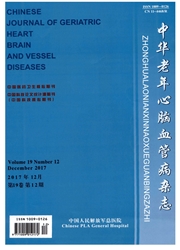

 中文摘要:
中文摘要:
目的评估海马、海马旁回灰质体积是否可以作为阿尔茨海默病(Alzheimer's disease,AD)的潜在生物标志物。方法对35名AD患者(AD组)和27名正常老年人(NC组)的三维结构核磁共振图像划分双侧海马、海马旁回感兴趣区,按照y轴从前到后的顺序将各感兴趣区平均分为4段,得到双侧海马头、双侧海马体1、双侧海马体2、双侧海马尾、双侧海马旁回头、双侧海马旁回体1、双侧海马旁回体2、双侧海马旁回尾16个部分,比较AD组与NC组海马及海马旁回各段灰质体积,应用Fish线性分类方法和逐一至五交叉验证方法探讨双侧海马及海马旁回灰质体积对AD及NC的分类能力。结果 AD组双侧海马及海马旁回各段灰质体积较NC组明显减小。双侧海马及海马旁回各段灰质体积区分AD与NC的正确率为82%。结论海马及海马旁回灰质体积缩小可作为AD的疾病特征。
 英文摘要:
英文摘要:
Objective To evaluate whether grey matter volume in hippocampus and parahippocampus are potential biomarkers for Alzheimer's disease(AD). Methods In order to achieve more exact results, the bilateral hippocampus and parahippocampus were divided into 4 subregions(head, part 1 and part 2 of the main body, tail) based on the structural MRI data obtained from 35 subjects with AD and 27 normal control(NC) subjects. Then Fisher's linear discriminative and leave one-to-five out cross-validation analyses were performed. Results In each subregion of the bilateral hippocampus and parahippocampus,the grey matter volume is significant lower in patients with AD(P〈0.05, FDR corrected)compared with normal control subjects. The classification and cross validation analysis demonstrated that we were able to distinguish the AD patients from the normal control subjects at a higher correct ratio(higher than 82%). Conclusion The present study shows that grey matter in hippocampus and parahippocampus can be treated as features of Alzheimer's disease.
 同期刊论文项目
同期刊论文项目
 同项目期刊论文
同项目期刊论文
 Identification of conversion from mild cognitive impairment to Alzheimer's disease using multivariat
Identification of conversion from mild cognitive impairment to Alzheimer's disease using multivariat Functional Connectivity of New Supplement of Limbic System, Marginal Division, Affected in Alzheimer
Functional Connectivity of New Supplement of Limbic System, Marginal Division, Affected in Alzheimer Age of onset of blindness affects brain anatomical networks constructed using diffusion tensor tract
Age of onset of blindness affects brain anatomical networks constructed using diffusion tensor tract Altered spontaneous activity in Alzheimer's disease and mild cognitive impairment revealed by Region
Altered spontaneous activity in Alzheimer's disease and mild cognitive impairment revealed by Region Impaired Long Distance Functional Connectivity and Weighted Network Architecture in Alzheimer's Dise
Impaired Long Distance Functional Connectivity and Weighted Network Architecture in Alzheimer's Dise 期刊信息
期刊信息
